Miss the earlier episodes? Here they are: Part 1 – Part 2 – Part 3 – Part 4
In this episode, we look at the eyes on the ground, the trainers, we’ll also visit a modern Riding School in Germany today…
The Trainers
André Monteilhet, in his A History of Academic Equitation, makes the point that: “Vienna and Hanover became the two great poles of the equestrian upswing in Germany, and so, despite wars and revolutions, they have remained to this day.”
But while German cavalry teaching and practice changed fairly early, with a swing away to a more forward, simpler equitation, the old High School skills lived on in Germany. In 1762, the Baron of Sind, wrote: “I gave my master, the Elector of Cologne, a dapple-grey horse to ride on the day of the coronation of his brother Charles VII in Frankfort… (the horse) continued to execute the passage from the Römer to the church and, on the return trip, from the church to the Römer without losing a beat. Moved by a brave and noble pride, he adorned his action with two or three courbettes after a few steps of passage, and by alternating the two movements in appropriate intervals, he was the admiration of all Frankfort.” (L’Art de Manège)
Sind was of the view that once a horse showed an aptitude for a particular movement, that was it: “Those horses destined only for public functions should be exercised only at the Passage and Courbette so that they will not mix them with other airs.”
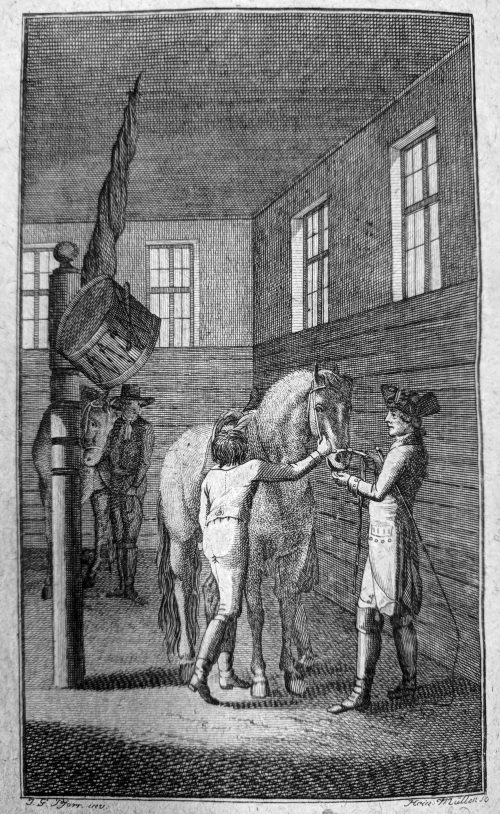
Ludwig von Hünersdorf – taking Guérinière to Germany
But the emphasis was changing, Ludwig von Hünersdorf, écuyer to the House of Hesse, and later knighted in the service of the King of Wüttemberg, was to translate Guérinière not only into German, but to adapt the great Master’s teachings to a more modern style of riding.
He gave the art of riding new vitality and related it to practical riding, which was particularly important, as the devastation in France had caused a break-down between Guérinière’s teachings and day-to-day riding. Hünersdorf changed this in Germany, teaching according to Guérinière’s thoughts, but never using dressage as a mere decorative Art. Although he taught his pupils piaffe and levade on schooled horses, he never forgot the practical aspect of the art. Following in the footstep of the Prussian cavalry generals, he schooled mainly ‘campagne’ horses, which after a two-year basic training had to be able to perform dressage, jumping and some cross-country.
In 1791 he published his book Guidelines to the Training of Horses in the Most Natural and Best Manner. This was the first classical German book on riding and training horses and established today’s balanced seat as the basis for the application of aids.
“He also described today’s balanced seat and defined self-carriage and how to achieve lightness of the forehand.” (Sylvia Loch, Dressage – The Art of Classical Riding)
Around this time there was also the development of veterinary science that established a tradition of scientific equitation that continues to today, in the work of vets like Gerd Heuschmann and Professor Peter Stadler (see his 2013 paper ‘The Veterinary basis of correct training’)
The famed German Veterinary College was established by Ayrer in 1784 – another piece of the jig saw is up and running…
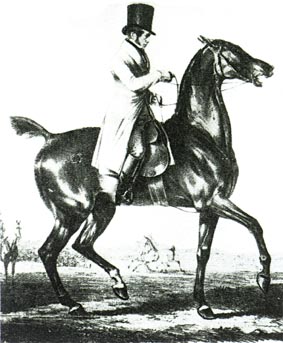
Louis Seeger – dressage pioneer
It is in the nineteenth century that German dressage blooms thanks to the influence of two great horsemen: Louis Seeger (1794 – 1865) and his pupil, Gustav Steinbrecht (1808 – 1885). Seeger had learnt his art in the Spanish School of Vienna, and his motto was: “Never forget that riding forward is the soul of the art of riding and that the necessary impulsion must come from the hindquarters.” Seeger was a passionate opponent of the teachings of François Baucher, and coined the phrase ‘gravedigger of French equitation.’
James Fillis in his Journal de Dressage (1903) describes how elevated the standard of riding was in Germany at the time:
“In Germany everyone knows enough about equitation to school his horse without the help of a teacher. In every city in Germany there is a quantity of excellent schools. Berlin has several with between 200 and 300 horses apiece… In a word, civilian riding is as widespread in Germany as it is neglected in other parts of Europe.”
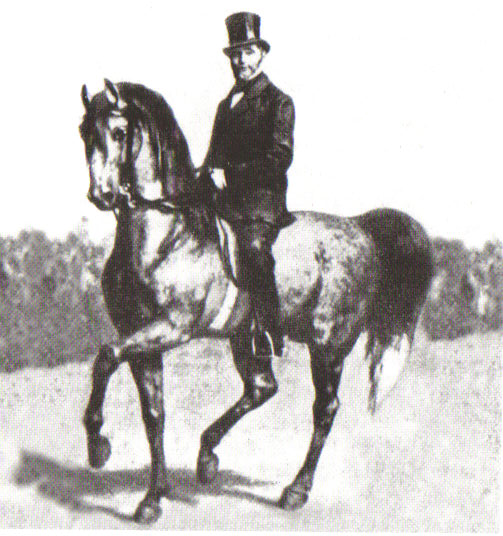
The Key Individuals – Gustav Steinbrecht
By the time Fillis wrote that, the great Gustav Steinbrecht had been teaching in Germany for half a century Here at last was a trainer for the new style of horse, for the new natural form of dressage riding. His most famous injunction, “Ride your horse forward and set it straight”, was considered by Colonel Podhajsky, the leitmotif of the Spanish School.
Although Steinbrecht never wrote a book himself, after he became director of Seegerhof in 1849, he started writing notes. He died in 1885 but entrusted the completion of his manuscript to his disciple, Paul Plinzner who saw the book through to publication later that year.
According to Steinbrecht:
“Correct dressage training is, therefore, a natural gymnastic exercise for the horse, which hardens its strength and supples its limbs… The end result is complete harmony in cooperation of the individual limbs enabling the horse to continuously and effortlessly perform with only the slightest aids from its rider, such regular and beautiful movements as it would demonstrate on its own only fleetingly in moments of excitement.”
It was Steinbrecht who showed the way to escape the old, stiff, dressage seat:
“I must remind the reader again and again to give up old prejudices and to derive the rules for the rider’s position only from natural principles. The unchanging so-called prescribed seat to which many instructors stubbornly adhere is the reason that the art has such a bad reputation. It prevents the student from becoming independent on his horse since with such a seat, he will lack the necessary feeling to be able to correctly evaluate his horse’s carriage and movement.”
“The rider who has been schooled in such a seat will present, after a long struggle, not a thoroughly schooled horse – that is a horse whose natural talents have not only been channelled and made subservient by dressage training, but have also been developed by suitable exercises – but a wooden machine which, although working mechanically is devoid of all elasticity and freshness in its way of going. Such horses are certainly not likely to produce enthusiasm for the art because their dull, mechanical way of going, fatigues the rider and wears the horse out before its time. For that reason, many riders feel safer and more comfortable on a horse with good conformation that moves in its natural carriage, than on a confused, so-called dressage horse that has been robbed of all its vitality. ”
“Whoever does not want to degrade this beautiful art to a mere trade – an art that has been held in high esteem from early times, and will continue to be appreciated as long as there is courage and chivalry in the human race – should first be diligent in exercising his own body and making all its parts agile and mobile, so that his stiff limbs will not act as shackles on better understanding and feeling.”
Steinbrecht hoped that his book would stimulate dressage until it rivalled racing and hunting – then “not only would the entire equestrian art be in splendid shape, the horse breeding industry would also be improved considerably. The first prerequisite for reawakening a general interest in the art of riding… and the main reason for writing this book is to ban from the art everything that is stiff, forced and pedantic, and to overcome the prejudices that a man on a horse must carry himself in strange posture, and that the dressage horses has to walk around as if screwed into an instrument of torture. Instead, the equestrian art is for both man and horse, a type of natural gymnastic exercise with which it is possible to attain and demonstrate the highest development of physical strength and skill.”
Steinbrecht’s teachings remain the basis not just of German riding, but riding throughout Europe, even the great Portuguese master, Nuno Oliveira paid tribute to the wisdom of Steinbrecht. They were the basis of the German Handbook, or Principles, which first appeared in 1912, and despite the many revisions, at their heart remains Steinbrecht’s way of riding and training.
Riding Schools….
One key part of the jigsaw is simply the popularity of riding in Germany. Englishwoman, Alice Hayes was married to an Army Vet, Horace Hayes, and traveled widely, still finding time to write many books on horse care, and the definitive treatise on side-saddle equitation. In The Horsewoman, published in 1893, she was impressed with what she found in Germany:
“I cannot help thinking that the Germans are more devoted to riding than any other Continental nation. I have not hunted in Germany, as I was there only during the summer; but I sold a good hunter to a German Count who was a fine horseman and a Master of Foxhounds. He told me that a large number of ladies hunted with his pack.”
“I was particularly struck with the immense size and beauty of the riding schools in Berlin. In the Berliner Tattersall there are three large riding schools, and I seldom went there without seeing some ladies on horseback. In the largest riding school there is a gallery, a refreshment room, reading room, several dressing rooms, a bandstand, and seating accommodation for hundreds of people.”
“The proprietor told me that in the winter months, when the weather is too bad for outside riding, ladies ride in the schools, and various entertainments are given. I saw a large number of ladies riding in the Tiergarten, although it was out of the season, and I expected to find the ride as empty as Rotten Row in the winter months. As I went there before eight in the morning, our German cousins must be early risers.”
“On the last occasion we visited the Tiergarten, we were on our way home from Russia, and, having a couple of hours to wait for our train, we strolled into the delightful wooded ride. It was about half-past seven on a cold March morning, and almost the first people I saw there were the Kaiser and the Kaiserin, so I no longer marvelled at German ladies’ taste for early rising.”
next we visit a modern day training establishment
When I started work on this series of articles, I travelled to Germany, and picked the brains of my good friend, Thomas Hartwig, and it was he who suggested that we go and see one of the wonderful contemporary riding schools that shape the future of German equitation, the Hof Schulze Niehues Fachschule Reiten, run by Thomas’ friend, Ludger Schulze Niehues.
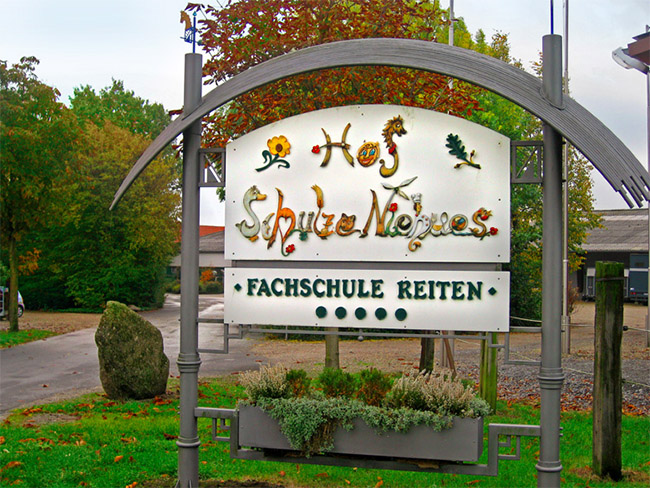
“I think they have had more than 12,000 over-night stays since they started,” Thomas explains as we wandered around the beautifully appointed facility. “They have forty-five school master horses, a third of them are able to go to a show and make a good picture.”
The horses certainly did not look anything like what the term ‘riding school horse’ conjures up – ears pricked, intelligent and alert, and all of them, very nicely conditioned.
“There are half a dozen trainers here at the School. The owner, Ludger Schulze Niehues, is also an examiner in the German Riding School. He is a master trainer, and in former times, he competed in top level showjumping. His son is also a very good showjumper, with a lot of success in high national classes, and lower international competition.”
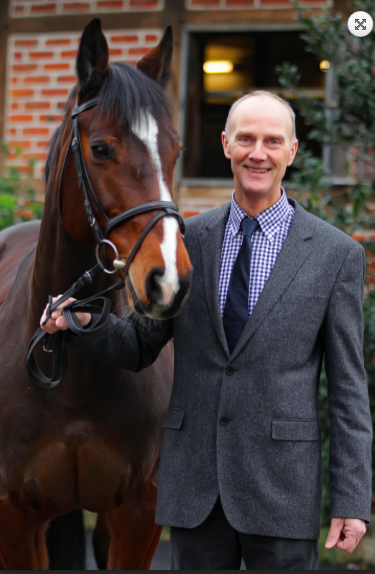
Ludger Schulze Niehues – visionary
“This was an old farm, founded in the seventeenth century. In the 1960’s they started with holidays for kids with horses. First with working horses, but it grew more and more, then the first ponies came, then the first Warmblood horses, so over the past forty years it developed step-by-step to one of only the five or six, five-star riding schools in Germany. It is an official rating, and five-star is the highest level.”
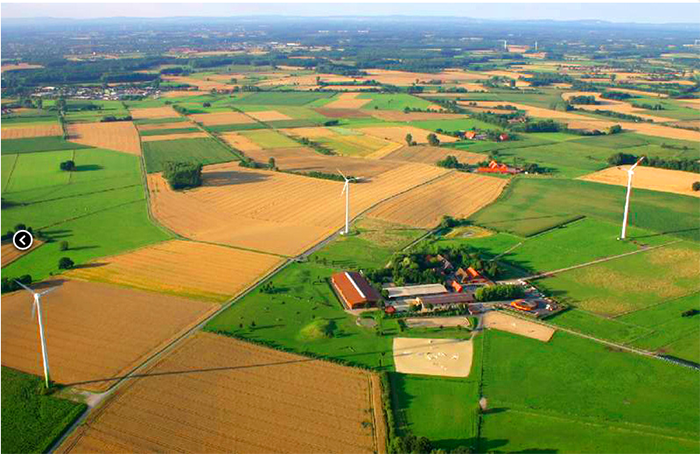
“The school is the scene of the annual training procedure for those who wish to gain their Amateur Trainer License. The job of examining the Amateur Trainers, is the allocated to the qualified riding schools in the various German States. Here in Westfalia, there is the Westfalien Riding School, and Hof Schulze. The examination lasts several months, and candidates must come on the Friday afternoon, and stay until the Sunday evening, from the end of October until the beginning of February.”
“The system of Amateur Trainers started approximately fifteens years ago. I was part of the first pilot project. The Amateur Trainers have to show that they can train three different groups of students: young people, 11- 14 years; the second group is made up of the trainers themselves, and the third group, are adults who learned riding as adults. To be an Amateur Trainer you have to show that you can apply the training principles to the different target groups. What is perfect for the youth group, is wrong for the adults.”
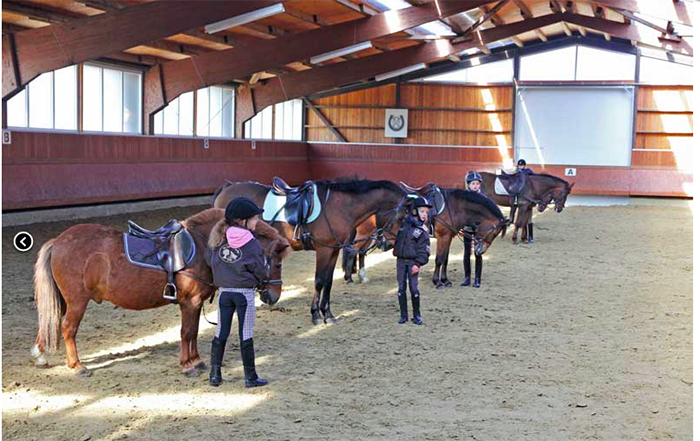
“Fifteen years ago, the organization of Westfalien horse sport, was very impressed with this pilot scheme and it has been gong since then, here with sixteen candidates every year.”
“There are Trainer Examinations for the Amateur Trainers. For this you must be able to give riding lessons, to ride themselves in showjumping and dressage, to pass a lot of theoretical tests on horse sport and breeding. In the German examination system, the best score is a one, and the worst, a six. In the pilot project, sixteen years ago from all candidates, the worst score was a three.”
“The young riders come here for two or three weeks, especially in the holidays and at other times, especially in the winter, there are clinics for adult riders.”
As Thomas walked us around the property we could see how it had developed, from the older stables to the bright modern open ones, with special stables for the horses that came from outside with their riders, somewhat separate from the rest. There are turnout paddocks so all the horses can spend some time outdoors – even in winter.
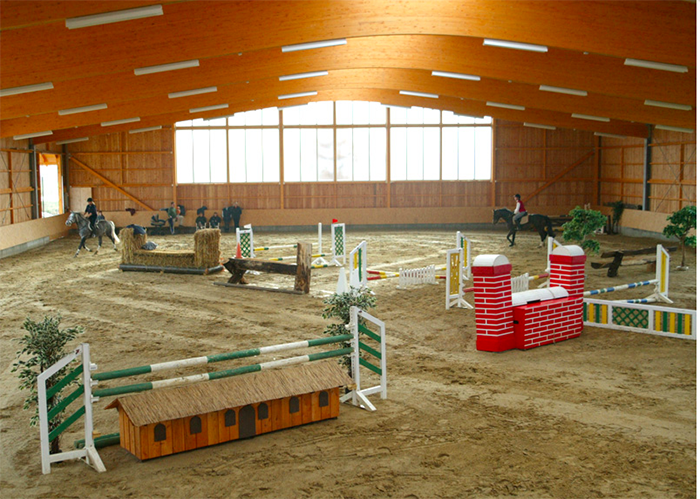
And the indoor schools kept getting bigger, from the original twenty by forty (later stretched a bit), to the somewhat larger second, and the positively huge third.
“For one week every year, there is a great show here. During the weekdays, the competition is for the professional riders, then at the weekend, it is for the amateurs. Dressage and showjumping, and at the weekend, a little bit of eventing.”
Out in the paddocks there were more than a few cross country schooling jumps, but for that big show, they build a 1000 metre cross country track, with 22 fences inside the biggest hall – with new challenges added every year.
“You need a GPS to find the right way,” laughs Thomas, “I had to ride it seven times to get it right.”
Is there any government funding for this complex?
“No. All is private. For me, it is the best riding school I know because Ludger is a fanatic on the principles of riding, he is a living principle of riding! A lot of riders and trainers in this area of Germany, made their examinations here, and a lot of them come back every year for several times, so it is really a little bit like a family.”
“If we had a lot more people like Ludger, we would have a lot less problems. Here they learn not only the right way to ride, but the right attitude – in the handling of the horse, in the relationship to the horse.”
The facility is even eco-friendly:
“He has three wind machines while the roofs are covered with solar panels and he is producing his own energy, he produces more energy than he needs.”
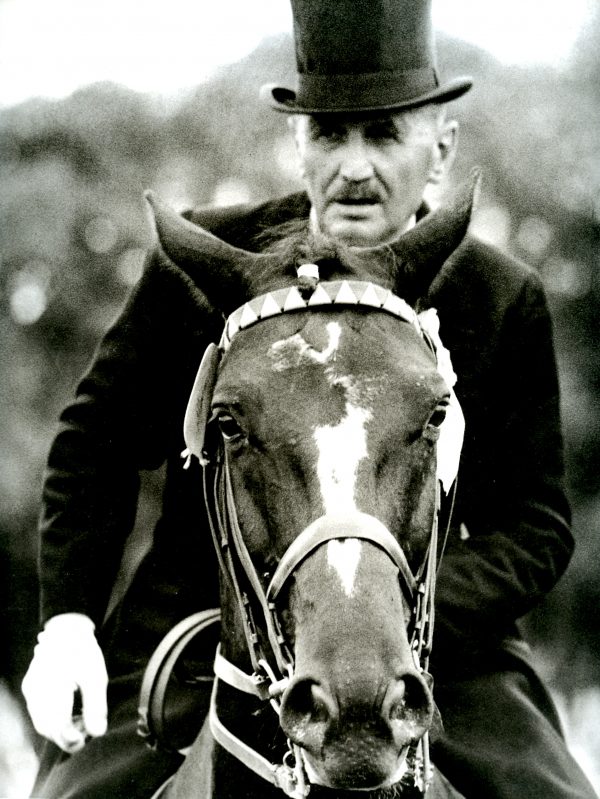
The trainer that influenced so many Twentieth Century Trainers:
Otto Lörke
The end of the nineteenth century also saw the birth of one of the most influential figures in modern German dressage, Otto Lörke. He was born in 1879, and died in 1957. Colonel R. A. Abé penned this tribute for the 1959 edition of L’Annee Hippique.
Richard Abé was born 1898 and in the 1920s and 30s, he was a successful rider in various disciplines. After the Second World War he was the long time chief editor of the German Horse Sport and Breeding Magazine St-Georg and one of the most important dressage judges of Germany. One of his successors, Jan Tönjes tells me that Abé published his judge’s notes from the Aachen score sheets in St. GEORG while he was editor-in-chief. Neckermann put pressure on the FN to enter in the rules that a ‘journalist from St. GEORG’ (sic!) wouldn’t be allowed to become an international dressage judge.
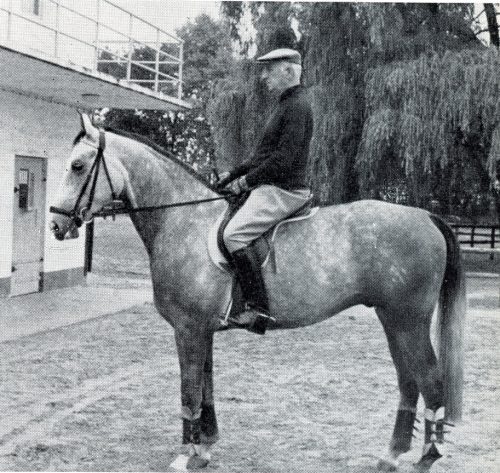
Abé didn’t just judge and write, here he is riding a four year old at Aachen
Here is Abé’s tribute to Lörke:
Otto Lörke’s death meant a great loss to horsemen almost everywhere. In the fifty years of his riding activities, he not only won countless competitions in the saddle but the number of well known Dressage winners he produced has surpassed anything we have seen in our time. Furthermore, he not only trained those horses, but also ‘made’ the riders who won with them. The work of his life really is a chapter in the history of the classic art of equitation.
Lörke, as Gustav Rau has put it, was a born genius, and as such was able to do away with the rules and limits that have to be observed by the average horseman. He had learnt, it is true, the military system of riding when he was serving his time with a Ulan Regiment of the Royal Prussian Guards. However, his great successes later on were mainly due to his own way of riding and training. During Lörke’s service in the army, his ability was soon discovered by his superiors, and he worked together with the then Colonel Baron Holzing-Berstett – who later became President of the FEI – and Count Lubert Westphalen. Lörke afterwards was transferred to the Royal Stables in Berlin where he was appointed the Kaiser’s ‘Leibund Sattlmeister’. His ability to produce supple and obedient horses that could be ridden by anybody was soon recognized.
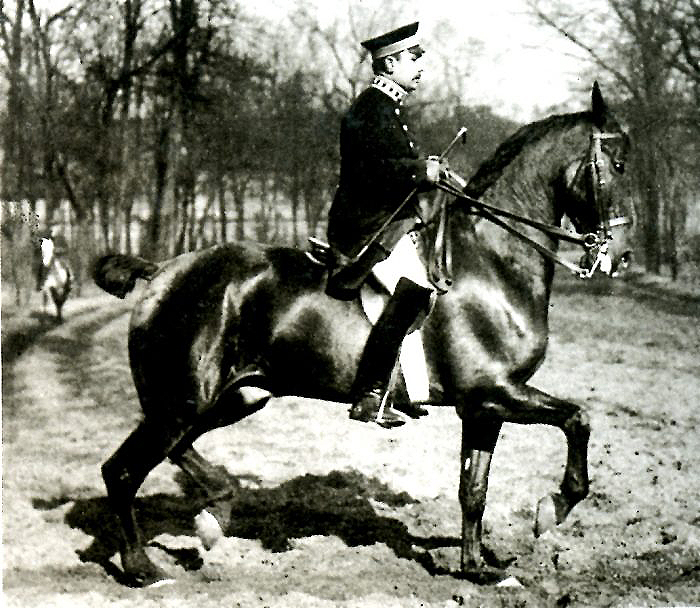
Otto Lörke in 1909 – riding in the Berlin Tiergarten
Therefore he was given the task of preparing the Kaiser’s horses, which had to be particularly well-trained as the Kaiser was hampered by a shortness and weakness of his right arm.
After the 1918 revolution Lörke, went to the Preten-Stud for a short time before establishing his own stables in Berlin. In those years that mark the growing popularity of showing and showjumping, he made his name as a specialist in dressage with Alberich, Diamant, later Pommerländer, Stracchhur, Dorffrieden, Fanal, to mention only a few. They all distinguished themselves by great impulsion and action; Lörke did not like ‘bores’ be it horses or men.
In the late twenties Lörke had so many well trained hoses in his stables that he was able to mount eight former Generals, who performed the famous Quadrille at the big Berlin Indoor Horse Show, that was watched by the President of the Reich, Field-Marshall von Hindenburg.
Some years before the Olympic Games of 1936 he was asked to go to Hanover Cavalry School to train horses and riders for the Grand Prix de Dressage. The result is known. The German team consisting of Major Gerhard – Absinth, Captain von Oppeln-Bronikowski – Gimpel and 1st Lt. Pollay – Kronos won the Gold Medal, the last named combination also winning the Gold Medal for the best individual performance. The commandant of the famous Saumur Cadre-Noir, Commandant Lesage, afterwards rode Kronos in Berlin. He said, never in his life had he been on a better-trained horse.
During the trying times immediately after the second world war, Lörke and his horses found a new home at Vornholz through the kindness of Clemens von Nagel-Doornick, who not only tried to collect what was left of outstanding German riders, but also made contacts again with horsemen from foreign countries. Here, Lörke produced a new string of great dressage horses Chronist, Lodi, Pernod, Afrika and Cyrenaika that were later joined by Adular and Malteser. We are glad to remember the pleasant demonstrations he gave together with his able pupils, Baroness Ida von Nagel, W. Schultheis and W. Schönwald at numerous shows. There is nobody who knew better than Lörke how to keep dressage horses at the peak of their form, and fresh, up to their old age, the huge East-Prussian Fanal, now 23 years old, being an example.
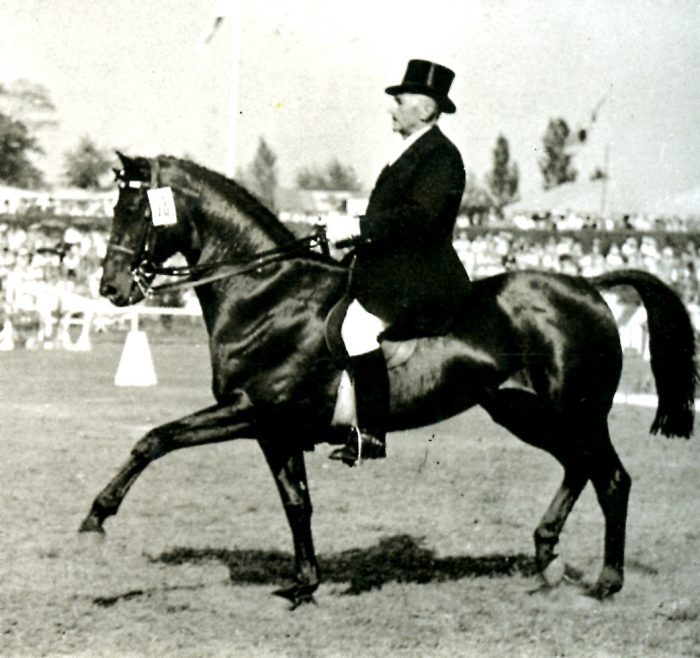
Riding the great, Chronist
Twice again the great instructor shone at the Olympic Games to demonstrate the classic art of equitation: in Helsinki 1952 and Stockholm 1956. Here is what Gustav Rau wrote after Helsinki in the St-Georg Almanac: ‘Our method of riding was well represented. The three horses were really supple, they definitely were in that high collection which is indispensible to do the difficult figures of the Grand Prix de Dressage correctly and cleanly. Impulsion in the extended paces could not have been better. Adular was brilliant and, even in the most difficult figures, did not hesitate to obey his rider’s aids. Herr O. Lörke had got horses and riders ready to give an admirable demonstration before so many critics.’
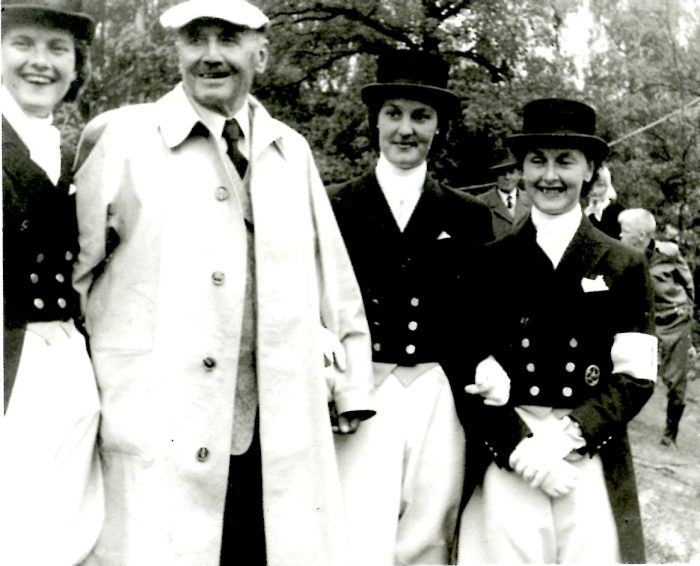
Lörke with his team at the 1956 Games – Liselott Linsenhoff, Anneliese Küppers and Hannalor Weygand
Thank you Richard Abé
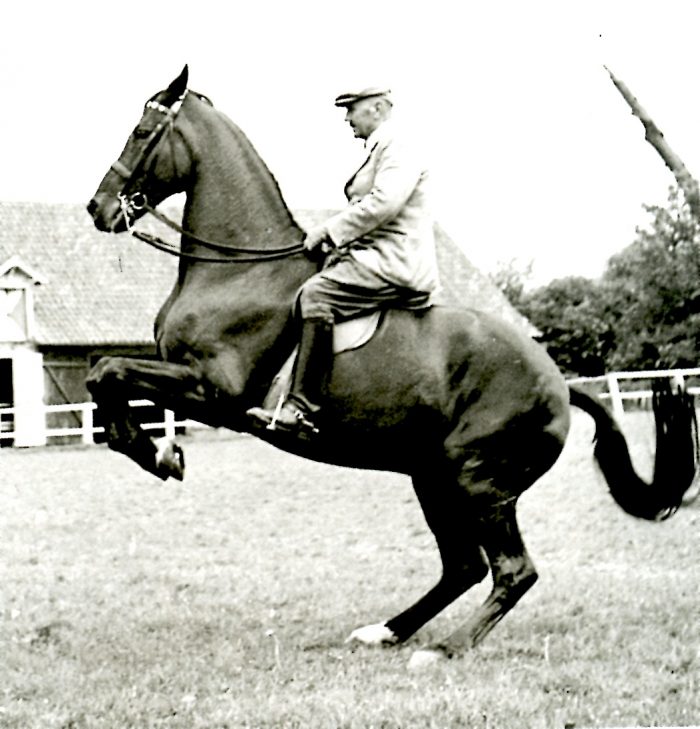
Lörke and Fanal
The line of Lörke’s influence extends. Another Lörke pupil was Bubi Günther (1921 – 1974) who in turn trained Herbert Rehbein (1946 – 1997) who trained scores of German and International students during his time at Grönwoldhof. Another Lörke student was Herbert Kuckluck trainer of, amongst many others, Ann-Kathrin Linsenhoff. Kuckluck trained Siegfried ‘Bimbo’ Peilicke (1932 – 2012), who from his base in Warendorf trained riders all around the world. Then the last of our trio of Lörke students, Willi Schultheis (1922 – 1995), another hugely influential figure, and trainer of Rudolf Zeilinger, formerly the Danish team coach, now coaching Spain.
Lörke was rumoured to carry a small pen knife in his pocket and when-ever he saw draw reins cut them into small pieces. Although he never wrote a book, he told his pupils to ‘look at me and try to discover the art yourself.’
What does this tell us? That lots of gifted horsemen took up the challenge of riding and teaching dressage in Germany, but more than that, there was an audience and a market for dressage. Even migrants to Germany like Georg Theodorescu or Jean Bemelmans, could find a ready audience for their skills.
Okay back in 1903, Fillis could write about the huge civilian population of educated horse persons, but the expansion of equestrian sport in Germany is also in large part the legacy of Gustav Rau – meet Rau in our next part.
If you are interested in dressage, check out the amazing library of dressage here
Breeding dressage horses? How about Foundation from the famous ‘F’ Line, available in Australia from International Horse Breeders: www.ihb.com.au
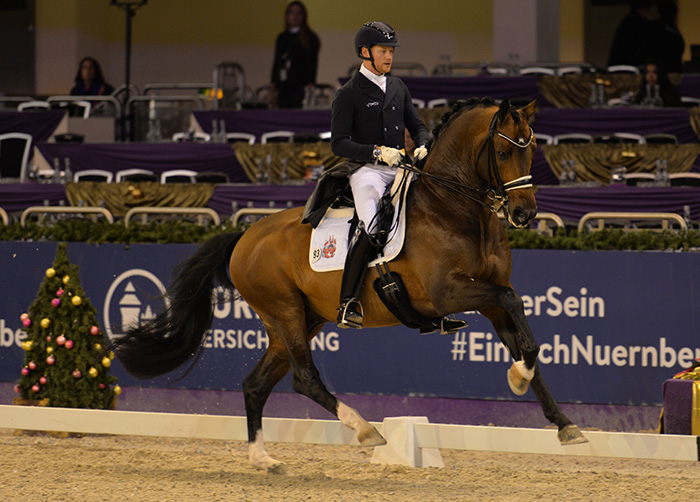
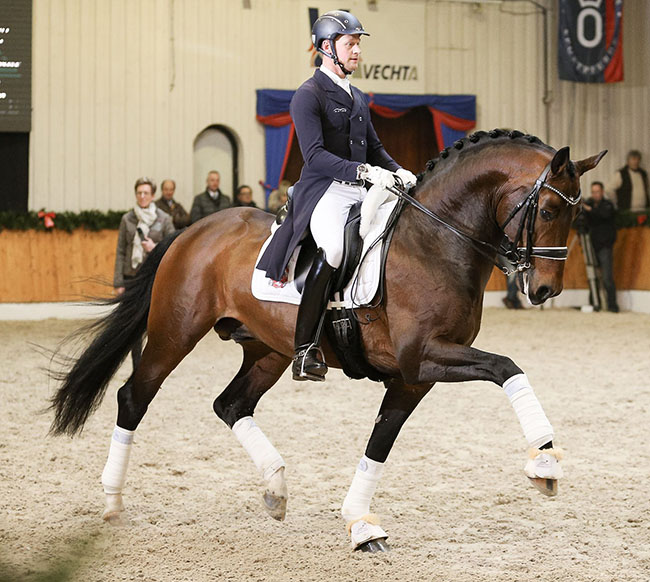



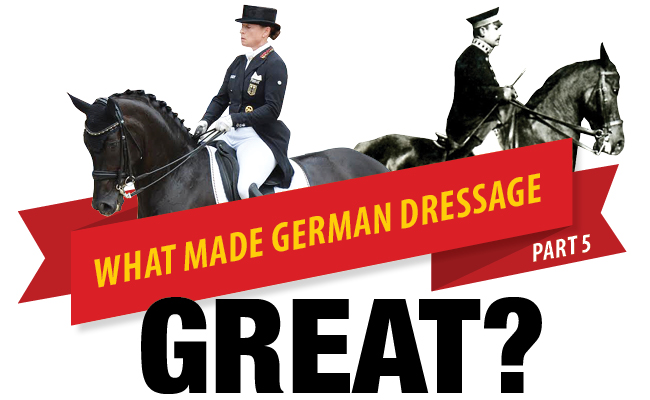


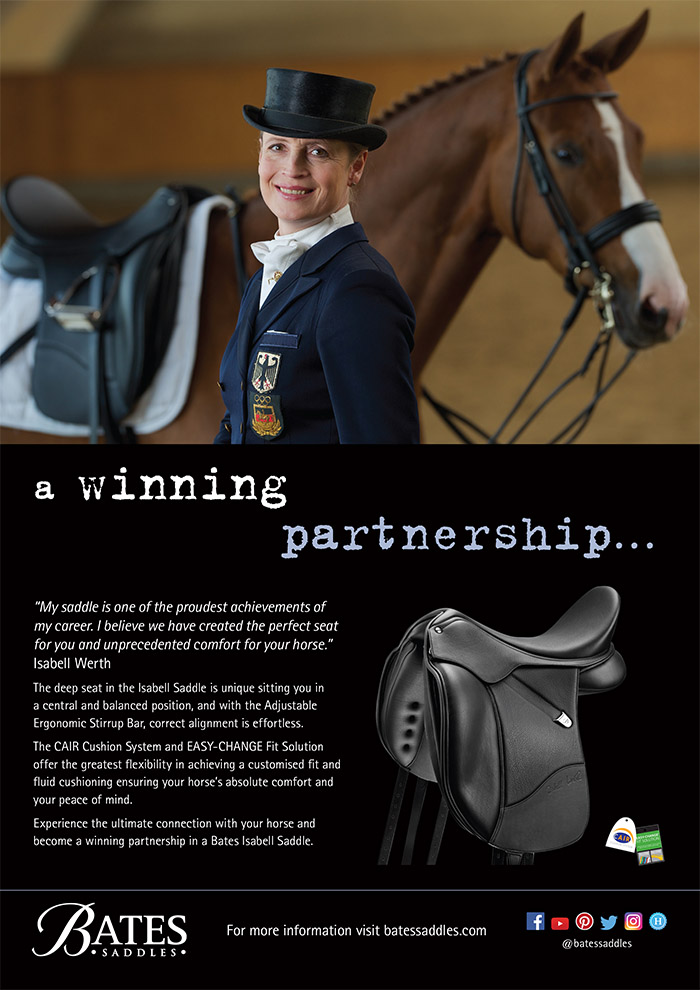
I remember hearing Bimbo Peilicke training at Warendorf – he had a very carrying voice!
And George Theodorescu and his wife were our first overseas riders at the new Goodwood International Meeting.
together with their 12 year old daughter Monica – they were lovely guests. Afterwards Monica was given a hunter pony to ride, and she did not uderstand why it did not make half-pass for her. She was very happy riding piaffe on one of her father’s horses while she helped him warm u;p.